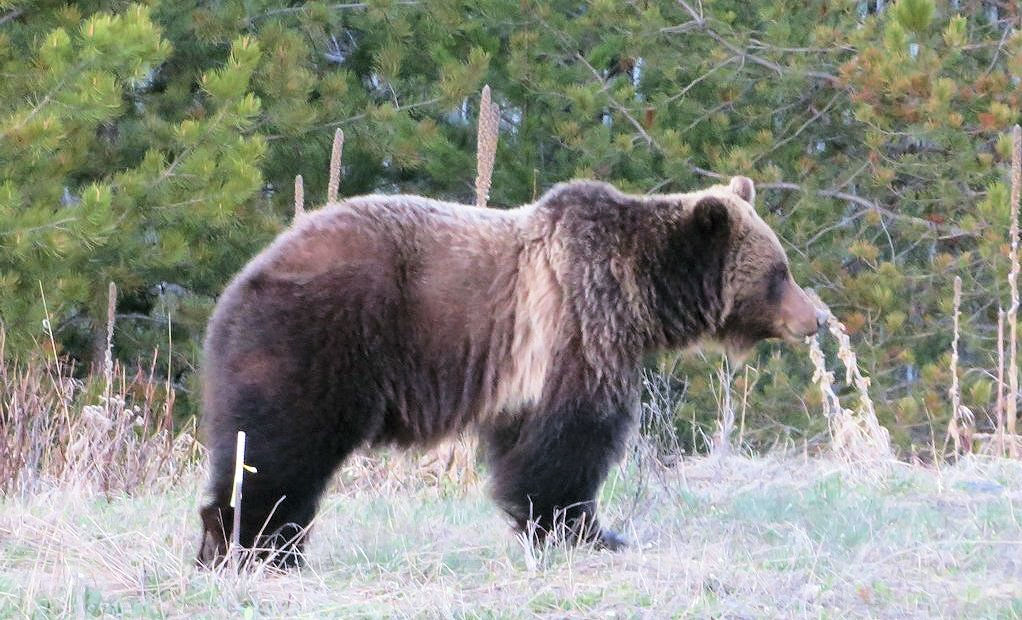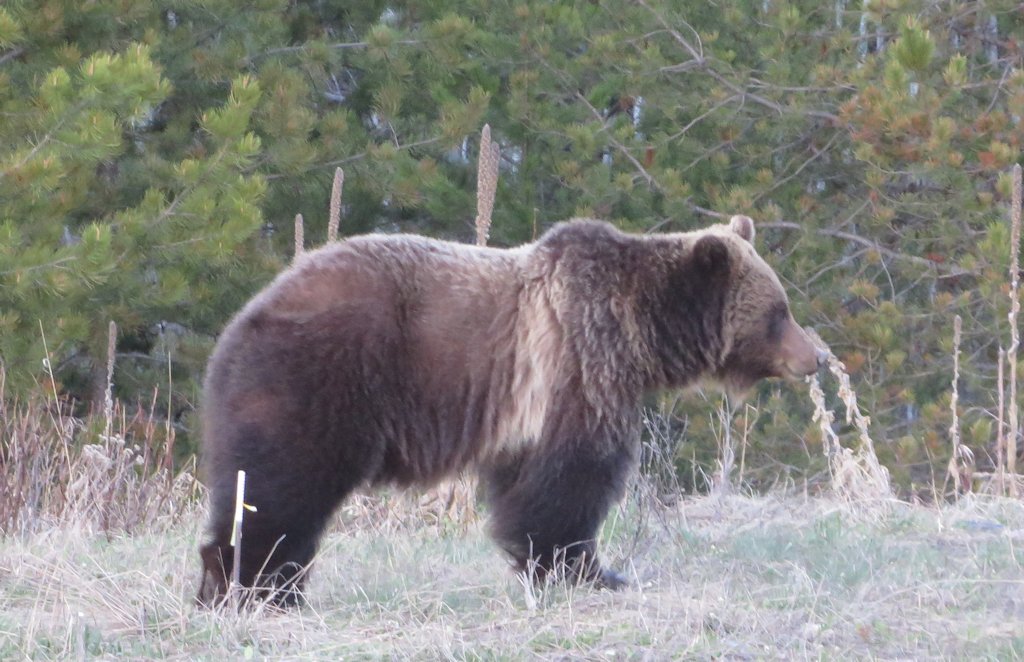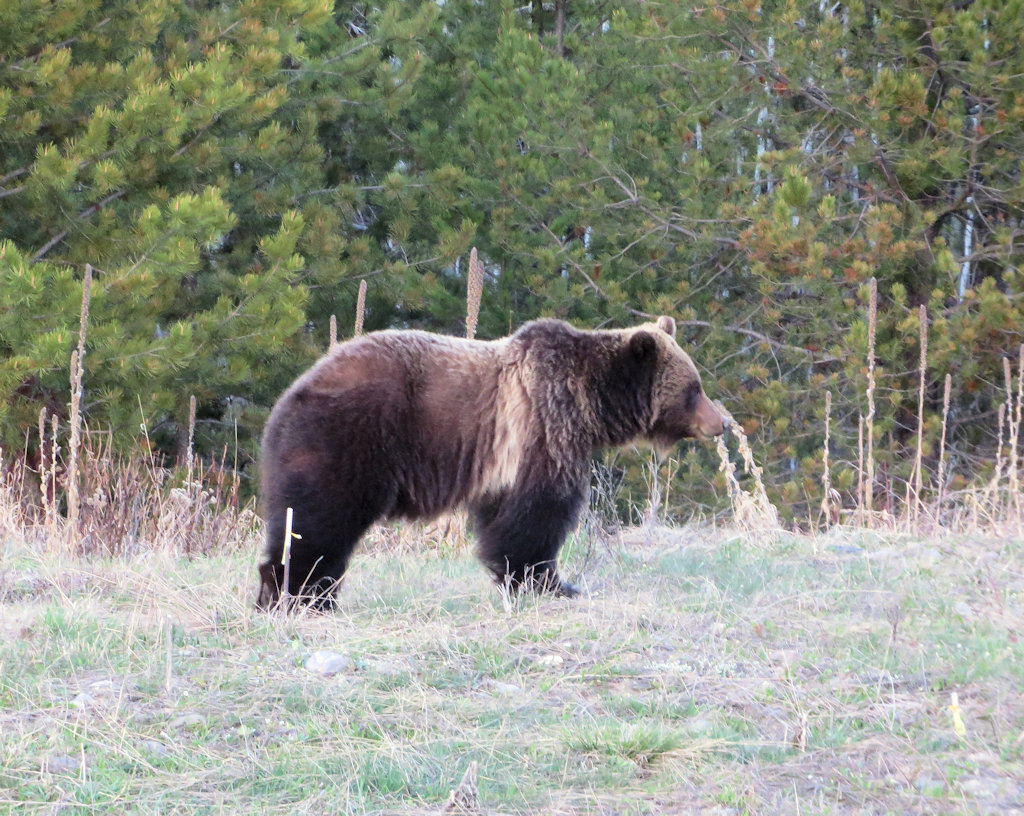
Here’s a news release by Tim Manley of Montana Fish, Wildlife and Parks, Region 1, summarizing recent grizzly bear activity. There’s some good stuff here . . .
Grizzly Bear Management Specialist Tim Manley has prepared the following summary in response to questions on grizzly bear activities in FWP Region 1:
Montana Fish, Wildlife & Parks grizzly bear management biologists and wardens have seen an increase in grizzly bear activity and conflicts during the month of September. Both black and grizzly bears are looking for food that will provide them with the layer of fat they need in order to survive the winter in their dens. Female grizzly bears with young are especially in need of additional food because they have been nursing their cubs and need the extra calories.
The following is an overview of the grizzly bear management activities that MT FWP has been involved with in the Tobacco, Flathead, and Swan Valley areas during the month of September.
Near Eureka, at least one young grizzly bear has been observed feeding on apples and walking through yards. Traps were set for that bear, but it hasn’t been captured yet.
West of Fortine, landowners buried a dead horse and noticed something had dug it up. They put up a trail camera and 3 different grizzly bears were photographed. One of the grizzly bears was wearing a radio collar that isn’t functioning properly. In an attempt to capture that bear and change the collar, two culvert traps were set. The horse was reburied and an electric fence was installed around the site along with remote cameras. On September 6th, an unmarked, young adult male grizzly bear visited the site and was captured. This male was radio-collared and translocated into the Whitefish Range. The radio-collared grizzly we were attempting to capture did not return to the trap site and the traps were pulled.
During that same week, a grizzly bear was breaking branches on fruit trees west of Lake Blaine. A temporary electric fence was installed and a culvert trap was set. The male grizzly bear returned, but was not captured. The electric fence was effective in preventing any additional damage to the trees and the trap was removed.
Right after Labor Day, an adult male grizzly bear was captured near Coram after killing chickens and eating apples. The 473 pound, 12 to 14 year old adult male grizzly had never been captured before. He was radio-collared and translocated to the Puzzle Creek drainage south of Marias Pass. The electric fence on that chicken coop has been upgraded to be more effective in deterring bears.
On the 9th of September, a large male grizzly broke into a chicken coop near Ferndale. Electric fencing was put up to protect the remaining chickens. A culvert trap was set. The male grizzly returned, it did not kill any more chickens, but it didn’t enter the culvert trap. Two days later, an unmarked, adult female grizzly with a cub of the year was captured. The cub was captured the next night and both bears were translocated to the Sullivan Creek drainage.
The trap was reset for the adult male, and the next night, a radio-collared female grizzly that has two cubs of the year was captured at the site. An attempt was made to capture both of the cubs, but was unsuccessful. To avoid separating the female and cubs, with the permission of the residents, the adult female was released onsite during the night of September 17th.
On September 16th, a photo was taken by a landowner of a female grizzly bear with 3 cubs of the year south of Ferndale. On the 17th, FWP bear managers contacted residents south of Ferndale about the family group. They have not caused any conflicts, but residents with fruit trees and poultry were advised to pick their fruit and make sure the electric fencing around their poultry was functioning properly.
In the North Fork of the Flathead, north of Polebridge, a female grizzly bear with a yearling killed some chickens and has gotten access to chicken feed and grain. Bear managers are working with local residents to secure attractants have installed electric fencing.
In the Swan Valley, a subadult female grizzly bear was hit and killed by a vehicle along the Swan Highway on September 12th, near the Condon Work Center. There had been reports of a grizzly bear feeding on road-killed deer just south of that area in previous weeks.
From mid-September until the grizzly bears den during November is typically a busy time for bear conflict specialists. Most of the berries have fallen off and the bears switch to other foods which sometimes brings them into areas with an abundance of fruit trees and other attractants.
While it seems like a lot of bears are causing conflicts, out of the estimated population of 1000 grizzly bears in northwest Montana, it is only 20 to 30 grizzly bears that are involved with conflicts throughout the whole area.
The best way to avoid conflicts with bears is through prevention. Take down your birdfeeders until bears have denned, don’t leave garbage, pet food, or grain outside. Use electric fencing to protect your poultry, beehives, and fruit trees. Pick your fruit as soon as it is ripe. Contact Montana Fish, Wildlife & Parks if you have a bear conflict or need information or assistance on securing attractants. You can get more information at http://fwp.mt.gov/fishAndWildlife/livingWithWildlife/beBearAware/.


